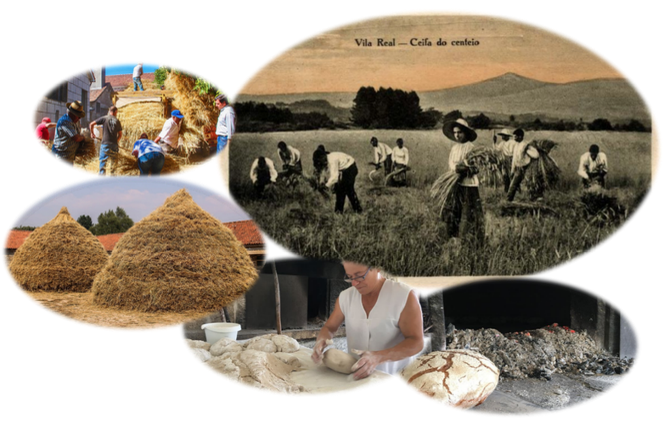Crop: Secale cereale L. (Rye)
The landrace ‘Centeio do Barroso’ is the main rye landrace in Portugal. It originates from southern Barroso, Trás-os-Montes. Barroso has been classified as World Agricultural Heritage in 2018 due to its crops, the traditional agricultural systems and the relationship between the local communities. This classification is likely to favour and facilitate the on-farm conservation of this landrace.
The large variability of this landrace is conferred by the environment and cultural system, and the way bread and flour are produced (type of mills, fermentation time, etc). Its qualities depend on where it grows it´s environmental conditions and their influence in the growth cycle, but it is always cultivated in low-input conditions. Sowing is usually in autumn and harvest in July. The seeds are harvested manually, ‘medas’ (rye branches arranged and tied to make a reinforced bundle with spikes inside and protected) are put together and dried in open air always avoiding the rain and the wind, and finally groups of people subsequently work on the threshing floor by hitting the ‘medas’ with a wooden hammer (‘malham com o malho’).
Cultivation System: low input conditions.
Geographical Information
Country: Portugal
It is a metapopulation present in the Barroso region, which belongs to Boticas and Montalegre counties, in Trás-os- Montes, in northern Portugal.
Farmer(s) description:
People produce and harvest the landrace to make homemade bread and today, the tourism offices promote the Barroso rye bread in that region.
Propagation system: Seed, cross-pollination
Multiplication procedures and consequences on landrace diversity:High levels of heterozygosity and heterogeneity are characteristic for open-pollinating species and, as expected, its genetic diversity is higher within than between populations.
Contamination by foreign pollen during multiplication may have changed the genetic identity of rye populations, which emphasizes the need for extended efforts to maintain the genetic integrity of the rye germplasm.
Management plan existence:The landrace management relies completely on farming activities within the area. Currently, no technical or scientific support is given.
Added Values
Traditional markets and rural tourism.
Others (e.g. commercial/geographical brands or special traits):Research, evaluation and valorisation of new types of bread is required.
Due to the high quality of the product, local associations and other public and private agents have an increased perception of the value of this landrace which, together with a renewed interest in agriculture in Portugal, gives hope for its on-farm conservation in the near future.
This LR can be requested from the national genebank (BPGV, INIAV I.P.) and the University of Trás os Montes (UTAD).
Case study provided by Instituto Nacional de Investigação Agrária e Veterinária (INIAV), Portugal.
ND.
